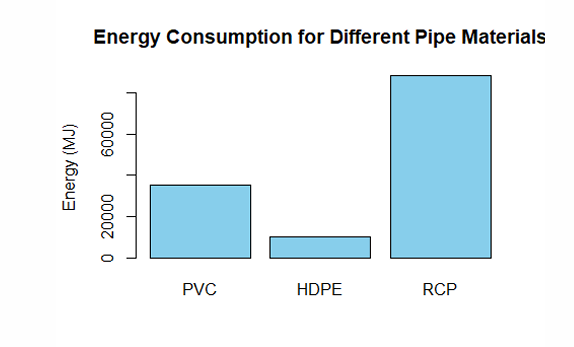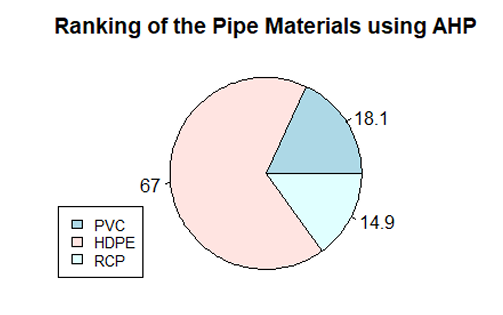With urbanization rapidly soaring to it’s peak and managing the surface runoff in addition to the recurring floods, management of stormwater drainage systems is a problematic task at hand under these unpredictable scenarios. These systems thus are of utmost importance of focus among the civil systems. Keeping these systems fail-safe and resilient should be the primary goal to withstand the unpredictable impacts and keep the communities safer. Furthermore, stormwater pipes, the most integral part of the entire system, attracts more focus because they redirect surface runoff, lowering the risk of flooding. However, there are extensive relationships between decisions on efficient functioning and maintenance over the course of their lives.
Structure and Dimensions adopted:
To study the performance over the lifespan, a 6 meter segment of stormwater pipe of 36 inch inner diameter was selected.

The LCA of three different design options of stormwater pipes namely, High-density polyethylene(HDPE), Reinforced Concrete Pipes(RCP), and Poly-Vinyl Chloride(PVC) was done to make effective decisions in selecting suitable material based on the performance metrics like energy consumption and CO2 emissions over the life stages from extraction of raw material to Maintenance.
After the assembly of the Life cycle Inventory and accountil for their respective emission and consumption values, the life cycle analysis was conducted to acquire the total metrics values corresponding to each option over the entire lifespan.
From the observations, HDPE stands out to be the most favorable and healthy option among the group, due its minor impact on the environmental grounds. Whereas, both PVC and RCP demands much larger energy use and discharges substantial emissions which thereby contradicts our point of concern.


Multi-Criteria Decision Analysis using AHP
The AHP analysis’s findings have clearly ranked the three pipe materials (PVC, HDPE, and RCP) according to our considered factors of energy consumption, CO₂ emissions, and PO₄ emissions. HDPE pipe with 67%, was found to be the most advantageous material, mostly due to its much lower CO2 emissions and energy usage. With energy use being the most concerning element in this project, followed by CO₂ and PO₄ emissions, this finding is consistent with the goal of minimising environmental impact in stormwater infrastructure.

References:
- “What’s that defect…. Road drainage systems”, February 15, 2023,Categories-Road Maintenance, https://civilengineering.engineer/2023/02/15/whats-that-defect-roaddrainage-systems/.
- Brudler, S., et al., 2019. “Life cycle assessment of point source emissions and infrastructure impacts of four types of urban stormwater systems”. Water Research. https://doi.org/10.1016/j.watres.2019.03.044.